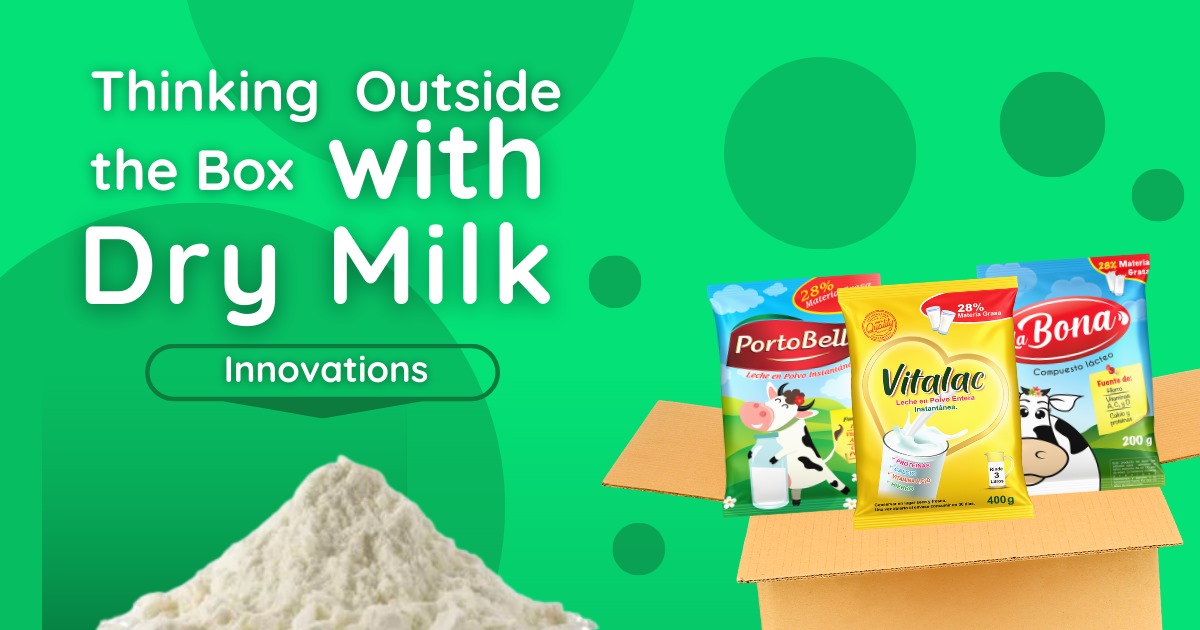Dry milk, also known as milk powder, has been a staple in many households for decades. Traditionally thought of as a backup for when fresh milk runs out, dry milk offers a surprising range of possibilities beyond simply adding water. By thinking outside the box, we can unlock a world of innovative and unexpected uses for this versatile ingredient.
The Basics of Dry Milk
Dry milk is cow’s milk that has been evaporated to remove the water content, leaving behind a fine powder. This process extends the shelf life significantly and makes milk more compact and easier to transport. Dry milk comes in various forms, including whole milk powder, skim milk powder, and instant milk powder, each with its own unique properties and applications.
Unconventional Culinary Creations
While many associate dry milk with baking, its potential extends far beyond cakes and cookies. Savory dishes like creamy soups, sauces, and even marinades can benefit from the subtle dairy flavor and thickening properties of dry milk. In baking, dry milk adds richness and structure to breads, pastries, and desserts. Additionally, dry milk can be used to create delicious and nutritious beverages like milkshakes, smoothies, and even some cocktails.
Surprising Non-Culinary Applications
The uses of dry milk extend far beyond the kitchen. In the realm of beauty, dry milk can be incorporated into DIY face masks and hair treatments due to its moisturizing and soothing properties. Dry milk can also be a helpful household cleaning solution, aiding in stain removal and odor control. For those with green thumbs, dry milk can be used in gardening and plant care as a natural fertilizer and even a mild pest deterrent.
Exploring Food Technology
Dry milk plays a significant role in food technology and manufacturing. It is a key ingredient in shelf-stable products like instant meals and powdered beverages, offering convenient and nutritious options.
Additionally, dry milk is used to fortify various foods with essential vitamins and minerals, contributing to a balanced diet. Furthermore, dry milk holds the potential for sustainable food solutions by reducing food waste through its extended shelf life and supporting local dairy industries through efficient storage and transportation.
Sustainability and Economic Benefits
Dry milk offers significant environmental and economic advantages. Compared to fresh milk, dry milk requires less energy for transportation and storage due to its reduced weight and volume. Additionally, its extended shelf life significantly reduces food waste. Furthermore, dry milk production can support local dairy industries by providing a way to preserve and utilize excess milk, potentially boosting local economies.
Challenges and Considerations
While dry milk offers a plethora of benefits, there are some challenges and considerations to keep in mind. Taste and texture can be slight concerns, as dry milk can have a slightly different flavor and texture compared to fresh milk.
Other than that, individuals with allergies or dietary restrictions, such as lactose intolerance, need to be mindful of the ingredients in different dry milk varieties. Finally, accessibility and availability can vary depending on location and individual circumstances.
Future Trends and Opportunities
The future of dry milk is bright, with emerging technologies and applications constantly expanding its potential. We can expect to see dry milk incorporated into new and innovative food products, catering to evolving consumer preferences for convenience, sustainability, and nutritional value.
Moreover, research continues to explore the potential benefits of dry milk in various non-culinary applications, further solidifying its position as a versatile and valuable ingredient.
Conclusion
By thinking outside the box, dry milk emerges as a surprisingly versatile ingredient with a wide range of applications. From culinary creations that tantalize the taste buds to unexpected non-culinary uses that enhance our everyday lives, dry milk offers a unique combination of convenience, functionality, and potential for innovation. So, the next time you encounter dry milk in your pantry, remember the hidden potential it holds and explore the exciting possibilities that await!
FAQ
Q: Does dry milk taste the same as fresh milk?
A: Dry milk can have a slightly different taste and texture compared to fresh milk. However, it is often used in applications where the subtle difference is not noticeable or even adds a desirable flavor profile.
Q: Is dry milk a good source of nutrients?
A: Dry milk retains most of the nutrients found in fresh milk, including protein, calcium, and vitamins. The specific nutrient content can vary depending on the type of dry milk used.
Q: How long can I store dry milk?
A: Dry milk can be stored in a cool, dry place for up to 2 years unless it’s opened. Once opened, it is recommended to store it in an airtight container in the refrigerator for up to 3 months.

